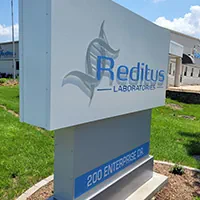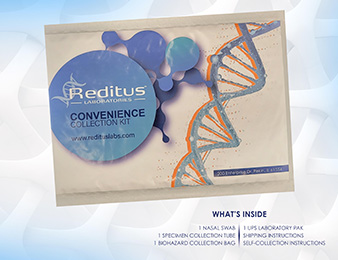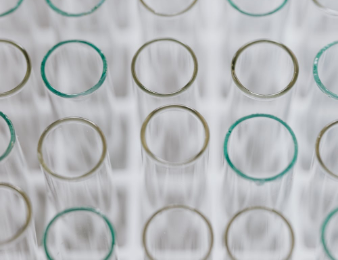PEKIN — About 15,000 specimens are tested daily for COVID-19 at Reditus Laboratories in Pekin. These specimens come from testing sites throughout the state.
Here is a summary of the process.
A trained staff member administers the nasal swab specimen collection or proctors the specimen collection if it is self-administered by the patient. In this photo, Jack Knight, of Morton, an employee of Peoria Public Schools District 150, is swabbed by Billie Jo Nebergall, a phlebotomist, on Jan. 12, 2021.

After the patient specimen and information is delivered by courier to Reditus, specimens are prioritized based on patient urgency. For example, specimens from hospitals and long-term care facilities are processed before specimens from community-based testing sites. With each patient specimen, an accessioner receives the specimen and enters the patient specimen order and demographic information into the Reditus Laboratories’ Information System. Then, the accessioner creates a label for the specimen vial. Here, accessioner Joshua Stonewall inputs specimen information.

Next, another accessioner scans patient information into the computer and places the vial in a rack. In the photo, accessioner Natasha Pearson scans a specimen for testing.
The rack and a corresponding sample map are taken into the molecular laboratory where a molecular lab technician, such as Karina Champion in the accompanying photo, transfers patient specimen into a sample plate for the viral RNA to be extracted. From there, sample plates are placed in an instrument that uses a two-step wash process to extract the viral RNA from the specimens.

Next, medical technologists, such as Wendy Wagner in the accompanying photo, prepare the reaction mix, which contains the primers and probes that are specific for SARS-CoV-2, and places it into a 384-well PCR reaction plate.

Extracted nucleic acid from each patient sample is transferred to that reaction plate. Reaction plates are transferred to the molecular analysis area, where the plate is mixed and centrifuged, and then placed on a Quant Studio real-time molecular analyzer. The analyzer tests for three COVID-19 genes. Two of the three must be present for a person to test positive for SARS-CoV-2. In the accompanying photo, April Robley, first shift lead lab technician, uses the Quant Studio analyzer.

Finally, patient amplification curves are analyzed in the molecular lab to determine whether or not COVID-19 is detected. In the accompanying photo, lab technician Jessi Edmondson analyzes run data.

The testing process at Reditus Laboratories takes four to six hours, said Michelle Anderson, clinical molecular lab manager.

The amount of time from when the patient specimen is collected until tests results are completed depends on where the specimen is collected in Illinois and must allow for time for the specimen to be delivered by Reditus courier to the lab, Anderson said. Reditus Laboratories provides COVID-19 testing for many hospitals, long-term care facilities and state testing sites. Reditus aims for less than 24 hours on STAT (urgent) specimens and less than 48 hours from community-based testing sites. During times of large surges, that goal is more difficult to attain. But Reditus lab technologists are working 24 hours a day, seven days a week, and put in overtime as needed to get testing done as quickly as possible.
















